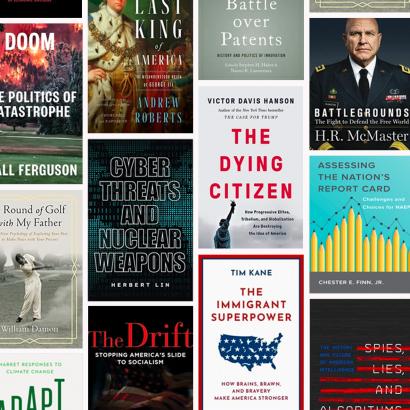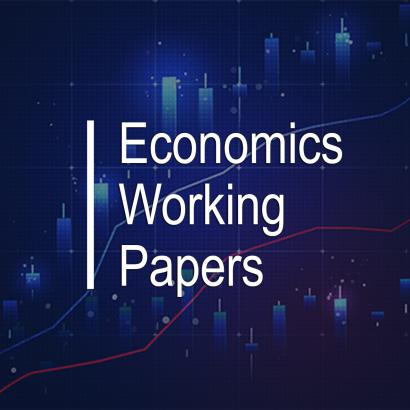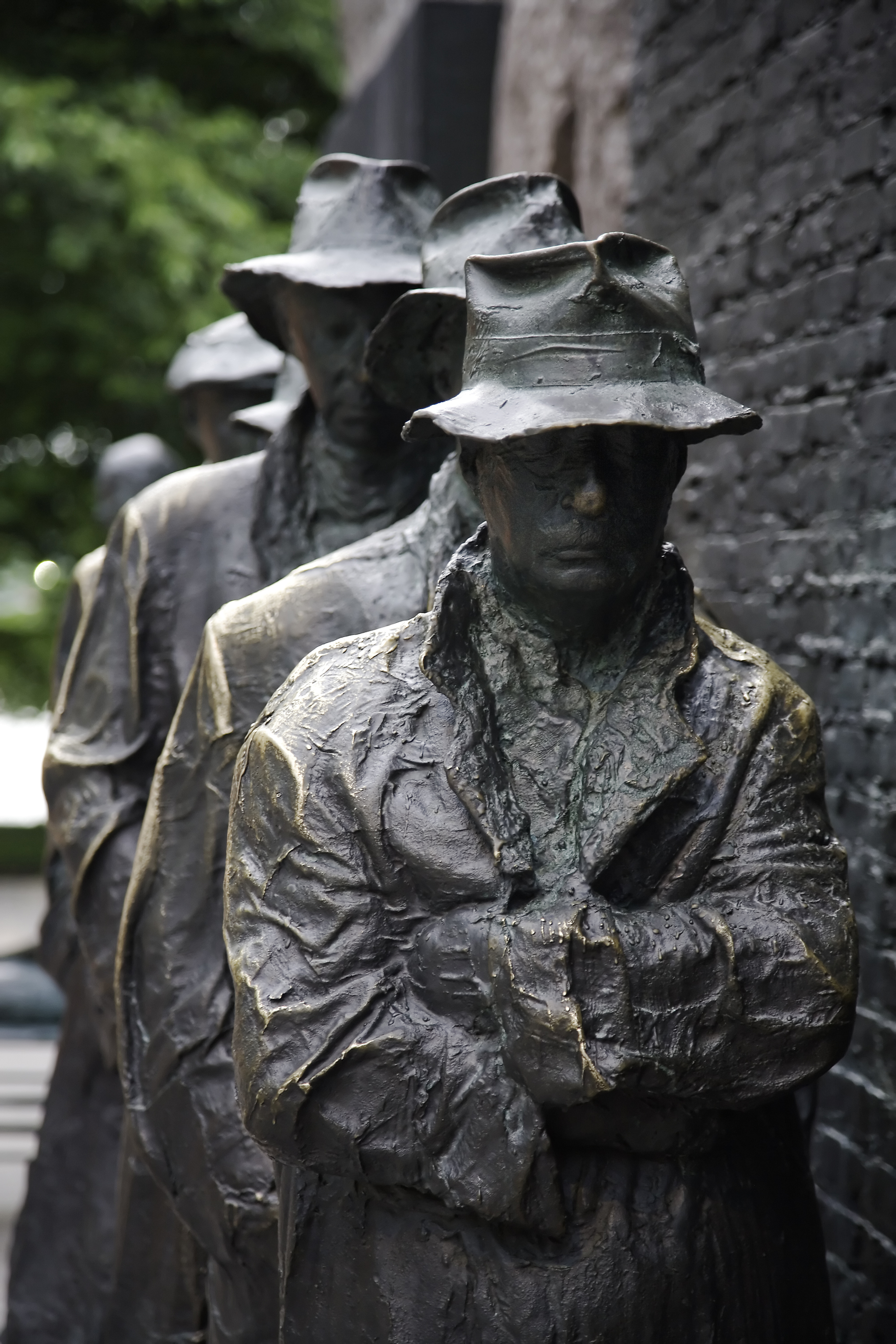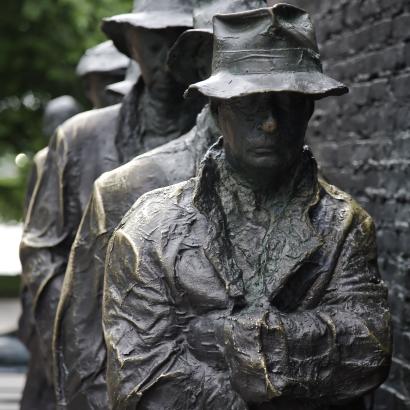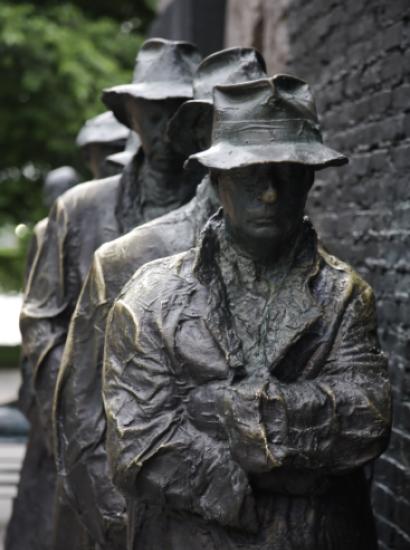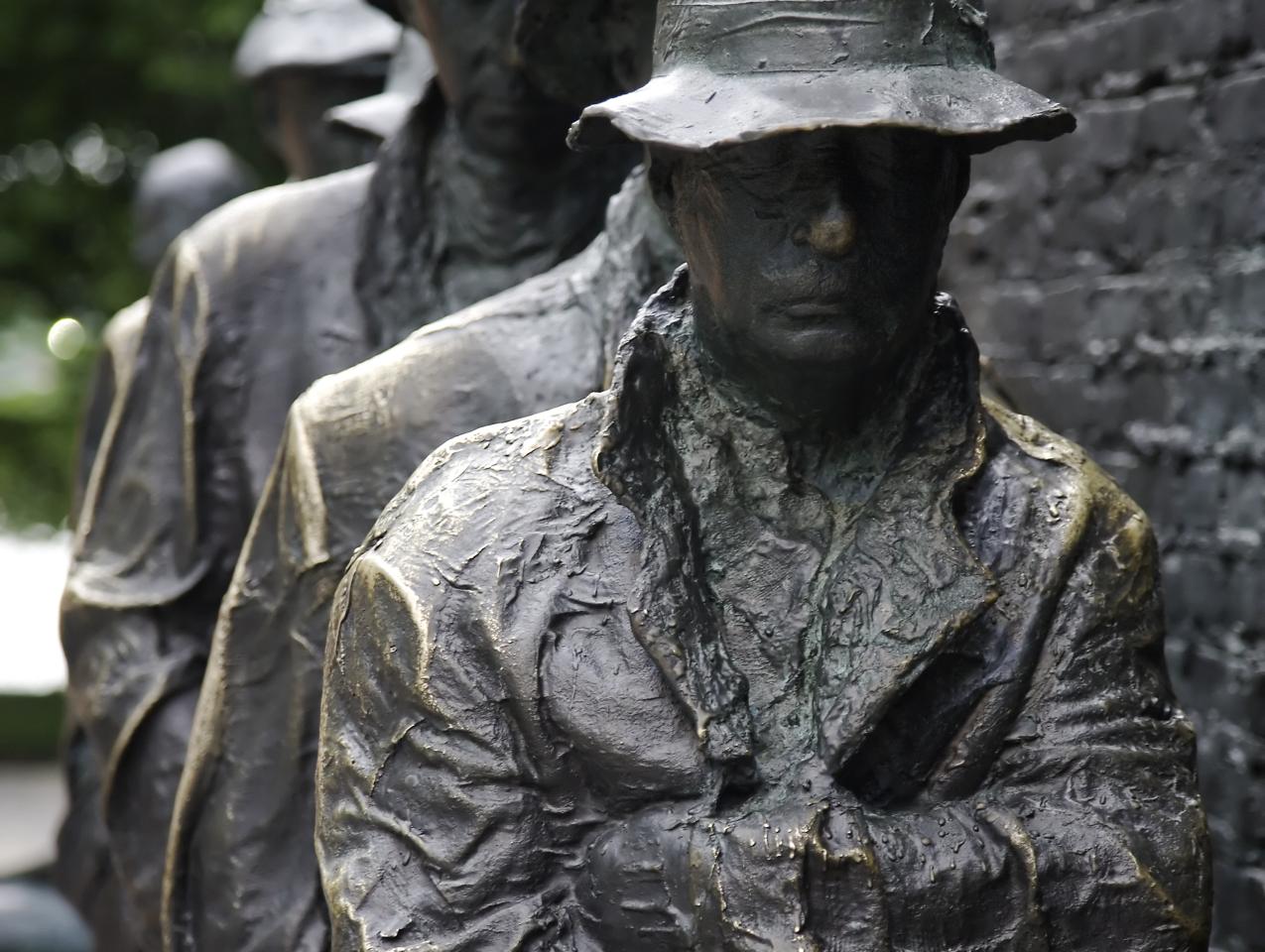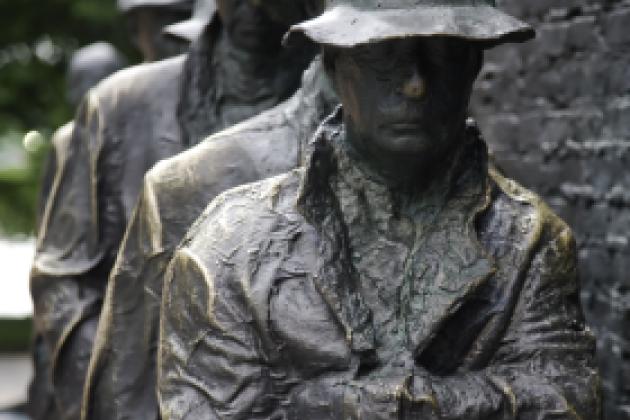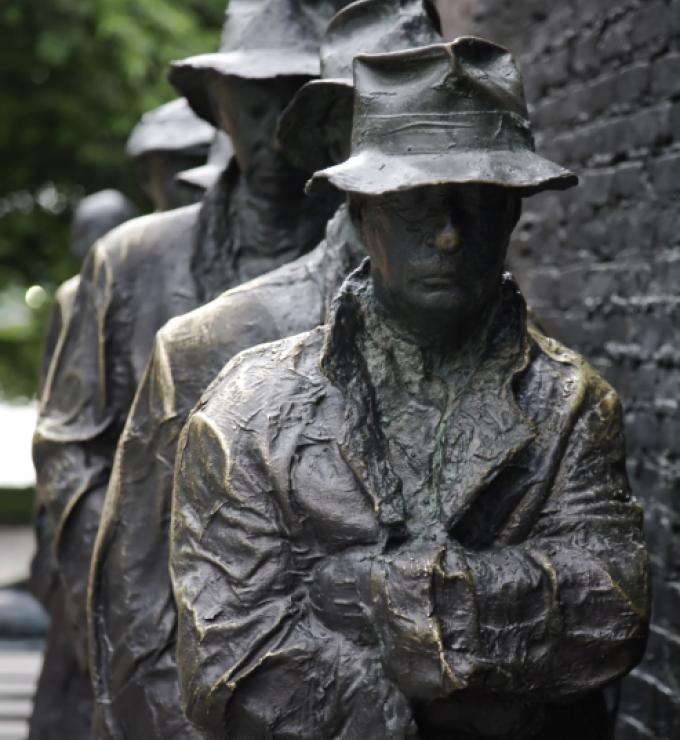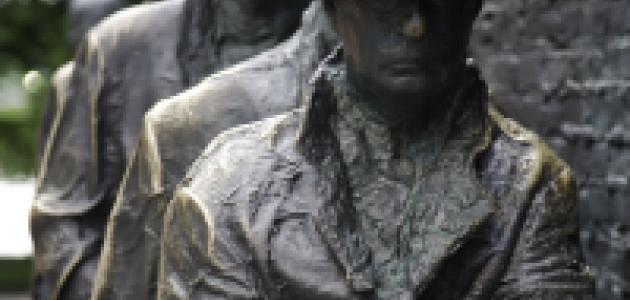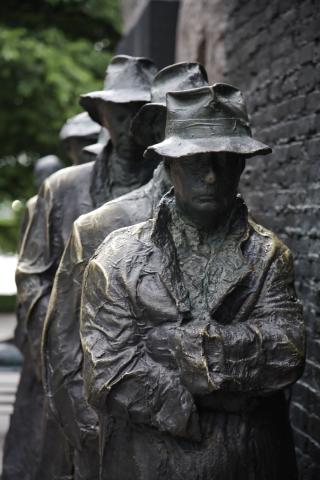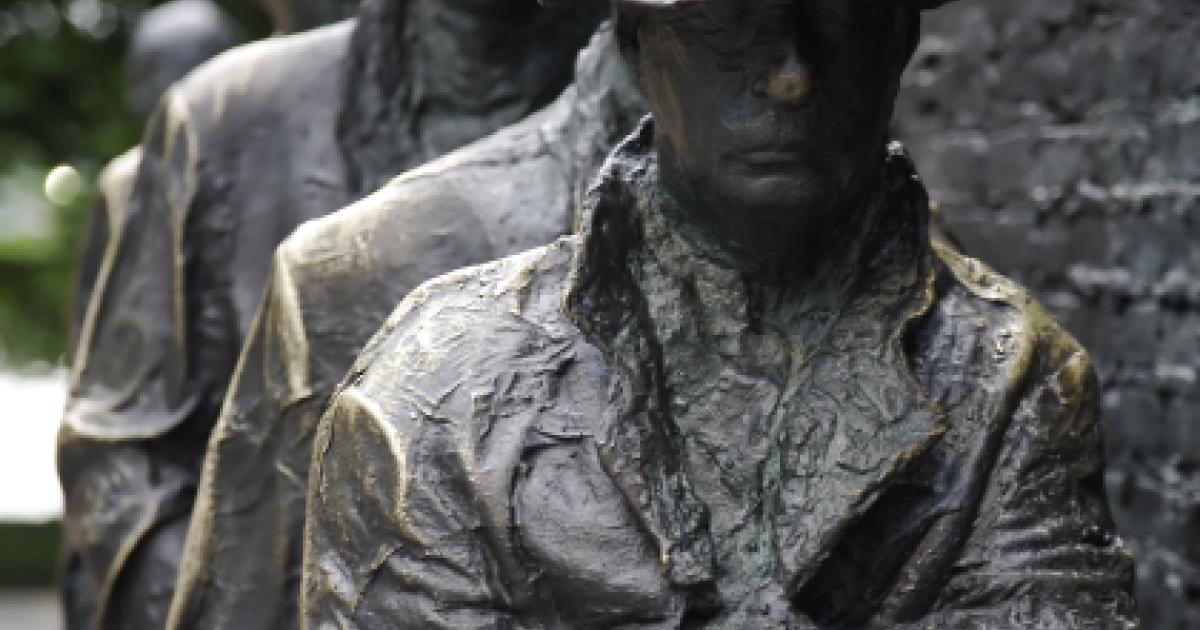- Economic
- US
- Monetary Policy
- Fiscal Policy
- Answering Challenges to Advanced Economies
- Revitalizing American Institutions
- Revitalizing History
The most important macroeconomic event in the twentieth-century United States was the huge growth in per capita income and living standards, from a level at which almost everyone was poor by today’s standards to a level at which very few people were poor. Arguably the second most important macroeconomic event last century was the Great Depression. It started in 1929 and ended in the 1940s. What ended the Great Depression? Was it Franklin D. Roosevelt’s New Deal? And, if so, which version of the New Deal? If not, what did end the Great Depression?
In his recent book False Dawn: The New Deal and the Promise of Recovery, 1933-1947, monetary economist George Selgin addresses these questions and more. I’ve read many books and articles on the Great Depression. Selgin’s book is, by far, the most thorough treatment I’ve read, and it will likely stand for a long time as the definitive statement on the causes of, and recovery from, the Great Depression.
Selgin doesn’t score cheap points. He carefully sifts through the evidence. His bottom line is that early parts of the New Deal, such as going off the gold standard, helped the economy recover but that later parts, such as the National Industrial Recovery Act, which cartelized hundreds of American industries, set the recovery back. Later actions by the Federal Reserve in 1936 and 1937 created a “double dip.” World War II helped end the Great Depression by causing FDR to quit castigating businessmen. The biggest surprise to many, which I wrote about here, and which Selgin quotes, is that neither expansionary monetary nor expansionary fiscal policy was responsible for the postwar boom.
The bank holiday and going off gold
During the days leading to FDR’s inauguration on March 4, 1933, writes Selgin, “the US economy resembled a body slowly bleeding out, its organs failing one by one.” He points out that the Federal Reserve System was losing gold quickly and that many state banking systems were shutting down. Selgin challenges the view that bank depositors panicked. Instead, he argues, they responded rationally to two legitimate fears: (1) that their banks would close, and (2) that gold, which had been valued at $20.67 an ounce, would lose value. So, they wanted to get gold while they could get it and avoid a loss on their accounts.
The New York Fed had approached President Hoover to ask for a bank holiday, but he refused. Why? Hoover is often depicted as lacking compassion, but Selgin presents evidence against that view. Rather, notes Selgin, Hoover had “legal and political scruples.” He wasn’t clear that he had the authority to declare a bank holiday. Indeed, Hoover tried to persuade FDR to support a bank holiday with the new Democratic Congress on board.
On March 6, two days after he was inaugurated, FDR did declare a national bank holiday that was to last until March 13. Selgin calls this “among the greatest achievements, if not the greatest single achievement, of his first term.” He also notes that this was not just a New Deal achievement but also one for which Hoover deserves substantial credit. Hoover’s Treasury officials had stayed on to help with the complicated details of the closing and reopening of US banks.
Selgin states that “the nationwide banking holiday marked the turning point of the Great Depression.” Why? Selgin considers a few possible reasons that it was the turning point. One on which he puts little weight is FDR’s fireside chat about having “nothing to fear but fear itself.” He also considers the view that economist William Silber stated in a 2009 article, namely that the main cause was institutional changes made by Congress and commitments made by FDR. Silber points to the newly passed Emergency Banking Act, which allowed Federal Reserve notes to be backed, not only by gold but also by “notes, drafts, bills of exchange, or bankers’ acceptances.” Also, FDR’s new treasury secretary, William Woodin, “promised to have the Treasury indemnify the twelve Federal Reserve banks for any losses to the public,” fulfilling FDR’s promise, in his fireside chat, that “banks that reopen will be able to meet every legitimate call.”
Selgin suggests that there is a more important reason that so many people trusted their banks after they reopened: they had never distrusted them in the first place. What depositors feared, as noted above, was either that they wouldn’t have access to their deposits or that devaluation would cause their deposits to lose value. But when banks reopened, the first fear went away. Their second fear was justified because FDR quickly nationalized gold and then devalued it, setting the price at $35 per ounce. So once that came about, there was no reason to take their money out to avoid devaluation because devaluation had already occurred.
The NIRA cartels
One of FDR’s worst policies was his National Industrial Recovery Act (NIRA). It should have been called the National Industrial Cartelization Act because it gave FDR the power, which he used, to form hundreds of industries into cartels. This would have been a bad move at any time. But it was particularly devastating during 1933 and 1934, when the US economy was in the depths of the Great Depression. Recall two things that economists of every political persuasion know well. First, during an economic downturn, output is lower than otherwise. Second, one of the main effects of a successful cartel is to reduce output further. So, it never made sense to cartelize industries. Yet that’s what FDR and the National Industrial Recovery Act did.
A related measure, the Agricultural Adjustment Act, cartelized agriculture. It set up the Agricultural Adjustment Administration in 1933 to pay farmers not to produce. That caused food prices to rise, which was good for farmers but bad for already cash-strapped consumers. Moreover, with less production, farm owners had less need for tenant farmers. There was a reason that the Okies left for points west. Even left-wing economist John Kenneth Galbraith, as a young agricultural economist working for the Roosevelt administration, understood the devastating consequences for tenant farmers. Galbraith’s biographer, Richard Parker, quoted Galbraith saying, in 1981, “I am astonished how little we were concerned.” Selgin’s book does not mention Galbraith’s reaction, and I’m not claiming that he should, but it is an interesting and powerful historical footnote.
One other aspect of the NIRA was the provision to keep wages high. Selgin notes that the National Recovery Administration was less concerned about wages than prices. But even if wages had received equal attention, that would not have been good. Keeping wages high would have caused businesses to employ fewer people than otherwise. Interestingly, Selgin makes it clear that Hoover had thought the same way FDR did. Hoover had not used legislation but instead had jawboned big businesses to keep wages high. Hoover thought that doing so would give workers more money to spend. Neither he nor FDR took account of the fact that if businesses had to pay higher wages, the wages of some workers, those who lost their jobs, would fall to zero. Hoover’s jawboning probably did little damage, though, because there were no means of enforcement.
But FDR’s NIRA did much more damage because it was enforced. Selgin quotes a 2019 book by economic historian Jason Taylor that compared the changes in output across various industries. Taylor divided the industries into those that provided for cartel pricing and those that did not. Taylor found that output fell by 20 percent in the cartelized industries but didn’t fall in the others.
The good news is that FDR got lucky even though he thought he was unlucky. In the May 1935 Schechter Poultry decision, the Supreme Court voted, 9-0, that both the NIRA and parts of the Agricultural Adjustment Act were unconstitutional. Selgin points out that in 1934 and 1935, real GNP grew by 7.7 percent and 8.1 percent, respectively. But in 1936, with the cartel shackles gone, GNP “grew by a whopping 14.1 percent.” That no doubt accounts for the fact that FDR was re-elected in 1936.
The double dip
Unfortunately, the economy took a double dip in 1937. Selgin explores the causes of that dip. One was that the Federal Reserve governors, seeing the huge excess reserves that banks were holding, feared an increase in inflation once the banks started lending some of these reserves. The Fed officials apparently didn’t consider the idea that banks were nervous about being short on reserves, as they had been earlier in the decade. Selgin notes that because interest rates were so low, this precaution on the part of the banks, “besides being prudent, was also cheap.” But between July 1936 and January 1937, the Fed doubled reserve requirements. Banks responded rationally: they tried to build a buffer of excess reserves by paring down loans. The result was catastrophic. Selgin points out that in a little over a year, starting in May 1937, real US GNP shrank by an eye-popping 18.2 percent. Tragically, there had been little need to worry about inflation. Selgin points out that in the late spring of 1937, the consumer price index was about 20 percent below its level in mid-1926.
Was monetary policy the only contributor to this large double dip? Selgin carefully considers the evidence and concludes that monetary policy contributed about half of the blow. The other contributor, he argues, was fiscal policy. He writes:
The Roosevelt administration reacted to the government’s record indebtedness by pulling hard on the reins. Federal expenditures, which thanks to the Veterans’ Bonus had risen to $8.7 billion in 1936, were reduced to $7.4 billion in 1937, while tax revenues were boosted by the undistributed profits tax introduced in mid-1936 and the Social Security tax first collected in January 1937.
Keynes and FDR
One of the ideas you can pick up from popular treatments of the New Deal is that John Maynard Keynes and FDR were in sync, both about the New Deal and about the role of fiscal policy. Selgin establishes conclusively that that’s all wrong.
In a December 1933 open letter to Roosevelt, Keynes criticized the idea that keeping wage rates high would increase workers’ purchasing power. Keynes wrote, in part, “Thus rising prices caused by deliberately increasing prime costs or by restricting output have a vastly inferior value to rising prices which are the natural result of an increase in the nation’s purchasing power.” In short, Keynes saw the problem with the NRA that almost all economists would have seen.
Keynes, of course, is known for advocating increasing government spending and cutting taxes during a serious recession. But as noted above, in 1937 FDR went the opposite way, cutting government spending and increasing taxes. Selgin shows that FDR was much more of a fiscal conservative than many of us had believed. He points out that Roosevelt had promised, during his 1932 campaign for president, to cut federal spending and that, on taking office, he followed through. His Economy Act of March 20, 1933, cut federal spending by $500 million, a 13.8 percent reduction.
What ended the Great Depression?
One of the main contributions to economists’ understanding of why the Great Depression lasted so long is economic historian Robert Higgs’s idea of “regime uncertainty.” With the early New Deal, FDR had cartelized industries. After the Supreme Court found this cartelization unconstitutional, FDR switched to aggressive enforcement of antitrust laws and attacked successful businesspeople as “economic royalists.” This, argues Higgs, can account for the drying up of investment in the late 1930s. Selgin lays out Higgs’s argument. Selgin also points to FDR’s proposed tax on wealth, which, he argues, “was less concerned with raising revenue than with soaking the rich.”
But in 1940, Roosevelt, wanting to get into World War II, knew that he needed businesses on board. He did so by getting rid of his most anti-business aides and, after the United States entered the war, often replacing them with the so-called “dollar a year” men, businesspeople who worked for an annual federal salary of one dollar and were paid at the same time by the businesses they had left. This ended “regime uncertainty” and helped cause a boom. The boom actually started in 1940 and went through 1941.
What about the claim we often hear that wartime spending created a boom? Selgin quotes Higgs’s point that FDR’s turning the US economy into a command economy during World War II means that we can’t take prices and output data at face value. Because so much of production was for the war effort, this was not the usual economic boom. Selgin quotes one economist’s statement that “the war was, particularly for the United States, a deepening of the Depression.”
The postwar boom
Selgin points out, as I detailed in my 2010 study “The US Postwar Miracle,” that many prominent Keynesians thought that the United States needed substantial federal government spending to avoid a post–World War II depression. In fact, federal spending was cut by over half. Yet we avoided a depression. The US government’s statistics say otherwise, but Selgin notes that if there had been a recession, people at the time would have noticed it. They didn’t.
That’s very good news, not just for the economy but also for longer-run economic policy. For a few decades, the postwar experience convinced people that we didn’t need heavy government spending to avoid recessions or depressions.
The verdict
In his final paragraph, Selgin notes that when the next severe downturn occurs, policymakers will look around for ways to respond, and many will be tempted to look for them in the New Deal. Should they? He gives due credit to the idea of insuring bank deposits and relaxing gold-standard limits on monetary expansion. But he notes that those are unrepeatable because we already have them. Policymakers, he concludes, would “be wiser to treat most of the New Deal episode as a warning about steps best avoided and to look elsewhere for better ones.”


